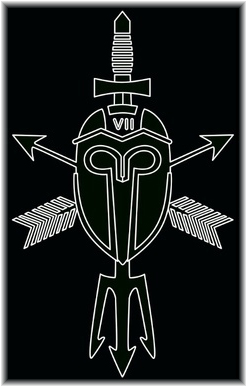by Mike Kennedy with Leo Girald from Novus Septem.png)
Some of you may recognize one kind of training I was involved with during my Army days. We would conduct a mission to take an empty objective. There were pretend bad guys on the objective, but we really had to pretend. Often during these training missions, blanks were in short supply and we had to shout “bang, bang… bang, bang” for our controlled pairs. Some of you may train this way now. With so little time to train, it is critically important that the training that we conduct is as realistic as possible. The setting has to be realistic, the environment has to be realistic, and the adversary has to be realistic.
The best training missions were those in which we had blanks, (live fire was really best, but we can’t do that against real people) and when there were real bad guys on the objective who “fired back” at us. The best training is when the bad guy holding hostages really acts like a bad guy, talks like a bad guy, and looks like a bad guy. Clearly, training for first responders should be as realistic as possible, when the bad guys are non-cooperative, uncompromising adversaries that use tactics, doctrine, and equipment representative of a composite of forces that could be encountered in current or future operations.
Recent events have required first responders to react to the horrific scenes that may occur once in their lifetime, and rarely trained on in their departments. United States counterterrorism policies provide that in the future the United States may face asymmetric threats in the form of attacks with Weapons of Mass Destruction (WMD) or attacks on our critical infrastructure. Managing these types of threats are some of the hardest trainings first responders need to accomplish. Realistic training becomes even more important. But the assets for realistic training missions can be hard to find, and expensive.
First, how do we get the training we need against realistic adversaries, then? We hire them. Really. Acquire the services of a company that specializes in playing a realistic adversary. The value of a hired, specialized OPFOR—Opposing Force—is that the bad guy is trained to play both sides of the fence; to understand the tactics of the first responder force while confronting it with the realistic simulation of an unpredictable, lethal threat. There are companies that have a cadre of experienced people who are very good at acting, talking, and looking like real adversaries. They can be the lone gunman whose neighbors all said was “a nice guy who kept to himself,” or they can be the 2-man team of terrorist scum who just bombed a major event in your city and are now on the run. For Mass Casualty training, their cadre can also play the tornado or flood victim very well.
Many times, one of our own plays the adversary or victim and probably does a decent job at it, but many first responder agencies don’t have personnel with the experience or expertise to realistically simulate the foes they might face. Sometimes we can find volunteers and family members who are willing to participate. We could ask the guy over at dispatch, but he is busy dispatching (we thank him graciously for all that he does), so he can’t do it. Honestly, these people probably just don’t have the experience or expertise to realistically simulate the perpetrator. After all, probably every small to mid-size department is understaffed. Another option is to use one of your own personnel in playing the adversary during the exercise. But if you do this, they can’t also be training to defeat the adversary.
Realism comes at a cost, for sure, but one department does not necessarily have to bear that alone. Most, if not all major incidents that would benefit from realistic training scenarios also require mutual aid. Many departments conduct annual training events with other local, county, or state agencies. With good coordination, annual large scale training events may be a great opportunity to hire an OPFOR for the realism your responders may benefit from.
A professional OPFOR can assist us in trying to get the most out of our training time in these types of scenarios. Novus Septem is one company who specializes in providing these services. They primarily support DoD and military training, but their expertise can easily be adapted to First Responder training. They develop adversary tactics, techniques, and procedures based on conceivable scenarios that would put first responders to the test.
To find out more about adding OPFOR to your training scenarios, contact Leo Girald at leo@novusseptem.com or check out their website.









